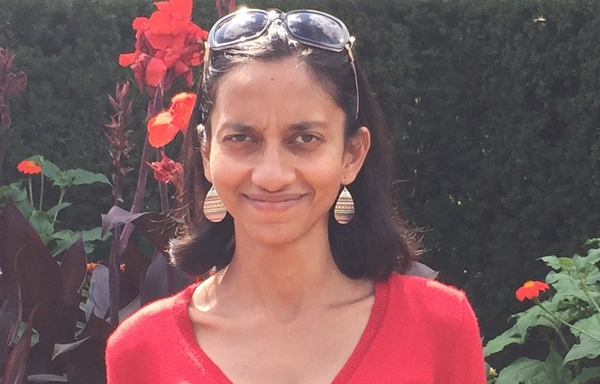
You've been working on a project to analyze the impacts of California's drought on public health. Can you tell us a little more about the project?
Sure – I work with a wonderful team that includes Professors Kurt Schwabe and Bruce Link from UC Riverside, Professor Mindy Marks from Northeastern University, and Kate Choi from Keck Graduate Institute. Our project is supported by the Robert Wood Johnson Foundation. We had two goals for this project: first, we wanted to uncover the impact of California's droughts on the health of its population, and second, we wanted to understand how those impacts could be mitigated through the state's water policy.
We chose to focus on drought because we see it as a slow-moving disaster in many ways. Unlike other climate disasters, drought's onset and end are more uncertain; therefore, its impact on human lives emerges only with time. Since climate science predicts that drought will become widespread and more intense this century – California has already seen some signs of that – it is a matter of some urgency to remedy the fact that the health effects of drought are so understudied relative to those of related phenomena like extreme heat. Our project is an effort to produce knowledge that can be incorporated in California's drought-time water policy.
You're still in the middle of the research process, but what are you finding so far?
To get at the health effects of drought, we separated it into events of extreme heat and events of extreme dryness. We then developed place and time-specific measures of human exposure to such events in California. For example, one definition of extreme heat we used was the total number of days when mean temperature exceeded 80°F. We calculated this number over different time horizons for each ZIP code in the state, and the resulting data became our earliest measure of the exposure to extreme heat. Finally, we combined these measures with two different health datasets we use in the project. One is a long-running, representative health survey of California's adults since 2001, and the other is the California Department of Public Health's vital statistics database on the universe of state births since 1990.
The results are really interesting so far. For example, we're finding that exposure to extreme heat increases psychological distress for adults of nearly every socioeconomic background. This negative effect comes through strongly in the case of night-time heat waves, which we define as spells of at least three consecutive, extremely warm nights. In this case, the benchmark for “extremely warm” was set with reference to the night-time temperature distribution typical for each place and time of the year. We do not find a parallel effect on distress from day-time heat waves, nor do we perceive any health effects from dryness per se.
In the infant health dataset, we find that in utero exposure to extreme heat (days with mean temperature greater than 80°F or 90°F) hurt birthweights most when events like that occurred in the second or third trimester. Our results also show that extreme heat events carry greater shock to birthweights when the second or third trimesters overlapped with the cold months of October through March.
What do you find most exciting about your research?
Our findings are really interesting to me because they stand somewhat in contrast to the climate-health literature. Previous studies on this topic have not parsed the effect of extreme heat on health using the concept of heat waves, nor have they drawn a distinction between day and night-time heat events. Of course, the climate literature has been saying that global warming is not merely an increased incidence of hot days, but also hot nights. Night-time lows are critical for human health because they offer an essential reprieve from day-time heat. So, it makes sense that we actually find that warming nights affect people's stress levels, and that temperature spikes in cold months affect birth outcomes.
I think in both cases, the heat events act like shocks; people are probably not sufficiently protected through air-conditioning, or able to avoid all outdoor-time. We are still exploring the aridity aspect of drought to see if it compounds how heat harms health. Our next challenge is to determine if drought-time water curtailments contribute to the health burdens of drought – we believe this might be true at least of some communities in the Central Valley and we are excited to find out what the data has to say.